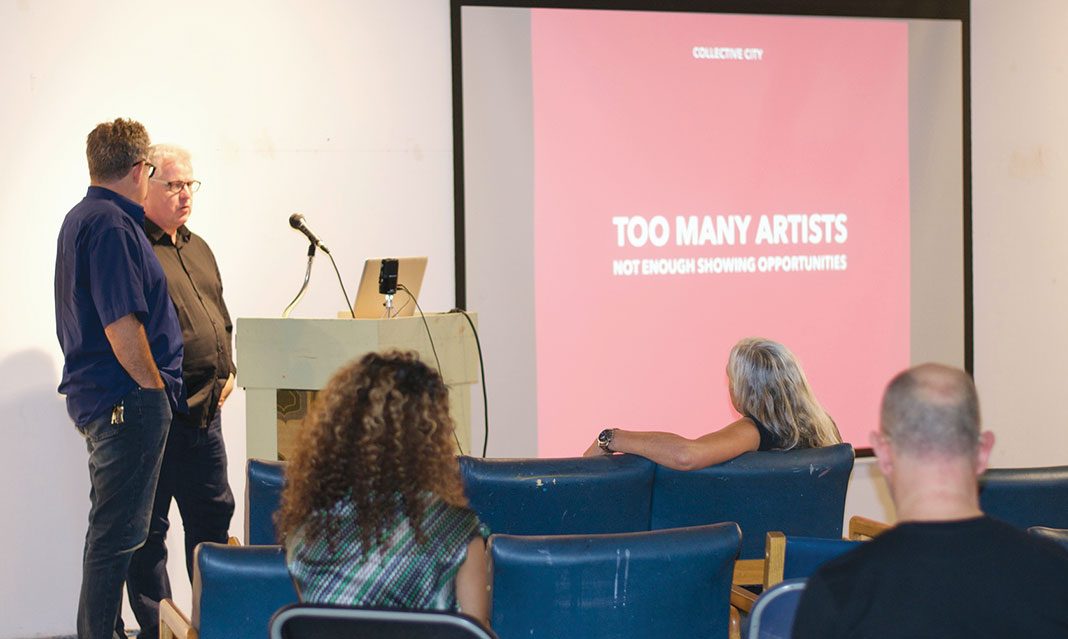Last Tuesday, the art and art history program at UTM and Sheridan premiered Collective City at Sheridan College’s Trafalgar campus. Collective City is a documentary series by Caroline Birks, Richard Mongiat, and David Sylvestre. It consists of eight episodes on early art galleries and exhibitions from the late 1980s to present-day Toronto.
Collective City intends to re-invent our understanding of the art community in Toronto. What’s unique about this series is its emphasis on Toronto’s history of fine art. Focusing on these collections not only revisits this rarely exhibited form, but also glamourizes it in extensive new ways.
One installment of the series, “The Red Head Gallery”, discusses the Toronto-based art collective called Red Head. Founded in 1990, this group’s gallery endeavours to provide a reasonably-priced studio for emerging artists to establish their work. Red Head prides itself as an alternative to commercial-based art galleries around the city. With 17 artists showcasing their pieces in the studio, the group’s passion for artistic freedom could not be more prevalent. Red Head ultimately creates a space for low-budgeting artists to compete among the city’s promotional exhibits. This motivation emphasizes the beauty of self-expressive art.
Collective City demonstrates many similar art shows and collectives like Red Head. MUD, featured in the third video entitled, “MUD”, is an art show that was launched in 1994. Curated by painters, MUD enlightens its audience on the absence of young artists in Toronto’s art scene.
Nicole Collins and Anda Kubis, the painters behind MUD, did not anticipate the success of their opening night. They speculated that Toronto art lovers had warmed up to the idea of recognizing emerging painters, no matter the space they occupied. After finding an office space with three floors on the east side of Yonge and Adelaide, Collins and Kubis filled the space with amateur works of 20 new Toronto artists.
The meaning behind Collective City is profound, yet simple. The notion that Toronto’s art scene could find inspiration from emerging artists seemed radical 20 years ago. But maybe that’s just what Toronto’s art community needs—radical, free-flowing artistic movements that rock the city in a never-before-seen kind of way.
The amateurism included in these collectives intend to prove exactly that. Watching them grow throughout this project and seeing new artists redefine the professional norm in Toronto is inspirational. This might not have been the idea Collective City started with, yet its result poses an idea more unique than any commercial art gallery could bring to the city.



